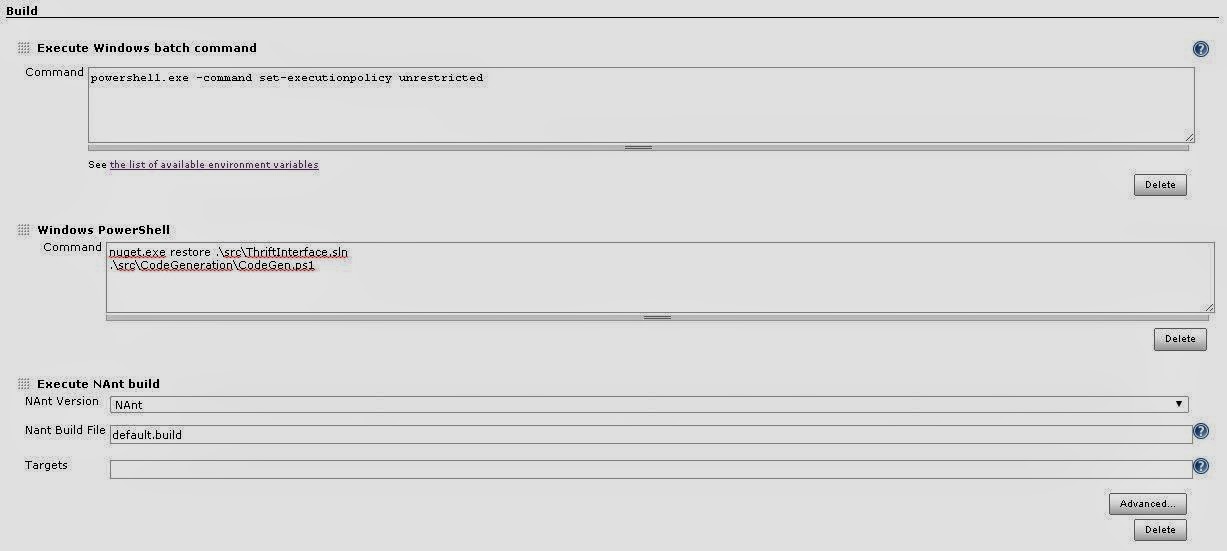A CI Migration Part III - Kiln, Jenkins & Web Hooks
For better or worse, the SCM I work with is Mercurial provided through Fogbugz’ Kiln. Yeah I know it’s not GitHub, but I was ignorant of that decision as it was being made so, yeah. Reviews, complaints, flamewars aside, working with it has not been bad and it has a reasonable feature set. Of note is the ability to program web hooks to fire on a push to a repository.
Configuring web hooks in Kiln is super easy and covered well in their online help here. For our integration we will be using a custom web hook; in you admin panel select web hooks and a new hook for all repositories.

That said one should consider that there are endless possibilities for this information. Consider the things we could do with web hooks:
- Trigger feature branch builds (as discussed).
- Keep a permanent log of commits by dev (regardless of feature branch destruction)
- Trigger round robin code reviews - good to give team members exposure to new elements.
- Send Chrome notification to dev to get up and walk around.
- Put pusher in the waiting room for next foosball game.
Point being that once you have the data starting to work for you, the enterprise comes alive. It is all about a loosely coupled, woven fabric of services and event streams working in a coordinated way to make everyone’s life a little easier and more fun.